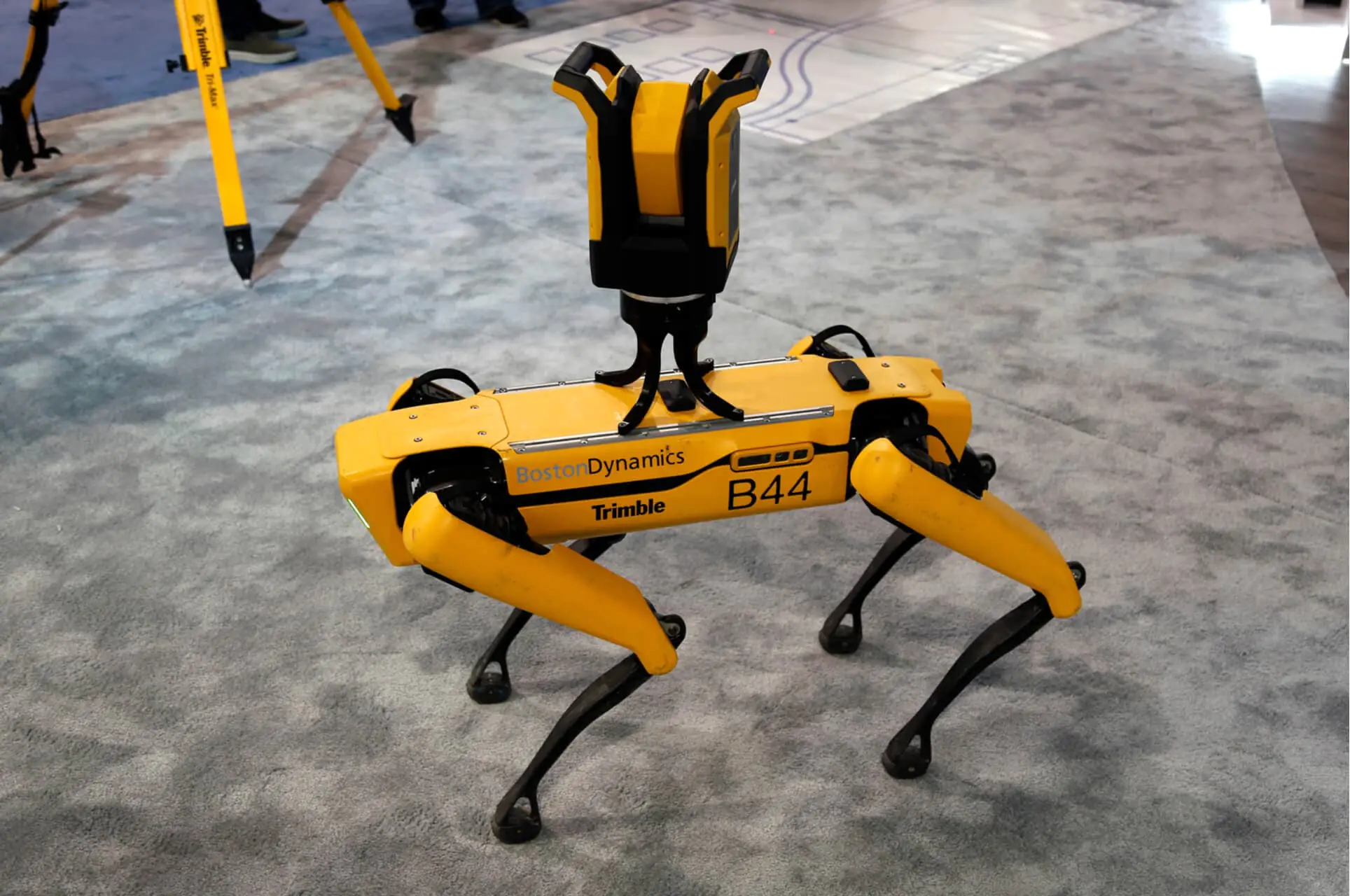Since the first public reveal of BigDog in 2004, there has been relentless controversy regarding the ethical and moral implications of the use of these robots in a professional capacity.
Some people feel that the recent introduction of these semi-autonomous robots into a commercial environment infringes upon human rights, while others believe there is a chance these robots could turn on us and pose a threat to humanity as we know it.
Below we will explore three of the most common questions surrounding the robots.
What is the Public Image of Boston Dynamics’ Dogs?
If you mention either BigDog or its ‘younger sibling’ Spot to the average person, you will likely receive one of two responses: the robots are incredible feats of engineering or, they are scary. Much has been done to combat this image, including releasing footage of the doglike robots opening doors, doing parkour, and even dancing to Bruno Mars’ ‘Uptown Funk’.
In spite of these endeavors to soften public perception of the creations, many members of the public still describe the robots as ‘terrifying’. This response has reportedly been to the chagrin of Boston Dynamics CEO Marc Raibert, who claims this unfounded fear is rooted more in science fiction than reality.
Indeed, most tales involving robots depict the relationship between humans and robots negatively. In Charlie Brooker’s popular television series ‘Black Mirror’, the episode ‘Metalhead’ depicts a bleak, dystopian future in which humanity has been all but exterminated by murderous canine robots hell-bent on wiping out all survivors. Critics described the cold, logic-fuelled antagonists as “horribly believable”, reinforcing the public’s fear of how these robots could turn on their masters.
Is it Ethical to Kick a Robot Dog?
BigDog’s reveal was one of the first encounters the public had with Boston Dynamics. The various videos demonstrating the automaton’s wide-ranging skills including its strength and stability drew criticism from viewers as members of the Boston Dynamics team kicked the robot in attempts to knock it over.
Despite BigDog withstanding each attempt to topple it over, many people felt Boston Dynamics’ actions were akin to animal cruelty, raising questions about the rights of these machines. A comment on a Daily Mail article said that ‘kicking a dog, even a robot dog, just seems so wrong’, with others wondering whether animal rights group PETA should be involved.
However, others disagree, explaining that the robot can neither feel pain nor emotions, and our technology is nowhere near the level to simulate either. There is also debate among mathematicians over whether we will ever have the ability to program true feelings. Without the ability to feel, kicking a robotic dog is no less ethical than kicking a tool such as a hammer or a drill.
While it is not considered unethical, kicking BigDog could raise questions about the morality of the individual kicking the robot. The creations are anthropomorphized enough for the human brain to recognize them as dogs – and members of the public have even been recorded petting them as they would real dogs. If someone’s first instinct is to kick BigDog or Spot, their morals might be called into question.
Should Boston Dynamics’ Robots Be Armed?
Boston Dynamics have been clear that it is not their intention to allow their robots to become armed in order to avoid any further negative impressions of their product. This has done little to assuage the fears of the public, with some even going as far as creating ‘The Campaign to Stop Killer Robots’ out of a concern that the robots will evolve into weapons.
A recent controversy has been sparked by Brooklyn-based art collective MSCHF attaching a paintball gun to Spot and allowing people to take turns controlling it while firing the gun throughout a gallery. This has drawn criticism from Boston Dynamics, who state that their products are designed to ‘delight and inspire’ society and should not be used to ‘harm or intimidate people or animals’.
However, there are further worries in the mind of the public. A bill published on March 18th would prohibit the NYPD from using armed robots with the intent to kill or injure. Once again, Boston Dynamics have made it clear that they rebuke such use, but some believe it is necessary to pass such a bill to ensure the rules are not ignored.
The main concern is that if these robots are armed it will become all too easy to dehumanize targets as the attacker itself is not human, giving rise to the assumption that violence would increase as culpability is reduced.
A Sign of Things to Come?
While Boston Dynamics are adamant that their robots are by no means to be used for harm, the fear that they will inevitably end up as weapons is pervasive and cannot be ignored. Whether BigDog and Spot will eventually be used for nefarious purposes remains to be seen, but for now, it is enough to wonder where these technological developments will lead us.

